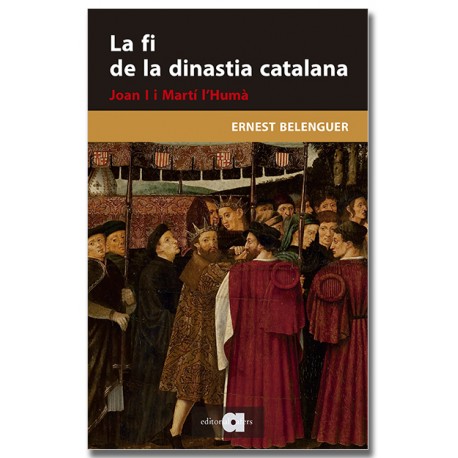No products
Prices are tax excluded
Product successfully added to your shopping cart
There are 0 items in your cart. There is 1 item in your cart.
 View larger
View larger
La fi de la dinastia catalana. Joan I i Martí l'Humà
978-84-18618-04-8
New
La fi de la dinastia catalana. Joan I i Martí l'Humà
274 pp. / 2021 / language: catalan
|
author Belenguer, Ernest |
|
More info
Ernest Belenguer i Cebrià (València, 1946) has a PhD on Modern History from the University of Barcelona and is a member of the Institute of Catalan Studies. During his career he has published books of modern history and afterwards of medieval history. It is imperative to distinguish València en la crisi del segle XV (1976), Ferran II (1999) or El Imperio Hispánico entre 1479-1665 (1995), as well as Jaume I el seu regnat (2008), Vida i regnat de Pere el Cerimoniós (2015) or Els Trastàmara (2019). Furthermore, he has directed works on synthesis about the territories of the Crown of Aragon and its kingdoms like Història del País Valencià (6 volumes), Història de les Illes Balears (2 volumes, 2004), Història d’Andorra, (2005) and Història de la Corona d’Aragó (2 volumes, 2007), In the end, Ernest Belenguer is a historian with polyvalent career.
If you look at the latest books that Ernest Belenguer has written, you will be able to verify that there’s a gap between the end of Peter IV “The Cerimonious” (1387) and the start of the Trastàmara from 1412. These are the years 1387-1410, in wich the sons of the “The Cerimonous” reigned: John I and Martin “The Humane”. This book is specifically about this, an era in wich it has more than one investigation, much more in Martin than in John, but no syntesis works with modern traits. His study allows one to notce the diferences between the first brother, euphemistically nicknamed “The negleted”, and the second wich tried to fix all the previous disasters without accomplishing it. It also allows more things like seeing the social, economic and institucional situations of diferent kingdoms wich constituted the aformentioned Crown of Aragon. However the bad management of John I or the fixes by Martin “The Humane” didn’t do too much. Death claimed more than one child that would have continued the dynasty. Like the name suggests, Martin “The Young” died in Sardinia without anyone expecting it and the only son he had, Frederick, was a bastard. In reality, it was the less valid reason for not choosing him, since before the Trastàmara had been bastards before and so were the portugese Avís. What happned was that Frederick was seven years old. The father had died in 1409, the grandfater in 1410, and the sicilian mother had no influence at court. In 1410 the catalan dynasty finished.
Reviews
No customer reviews for the moment.


